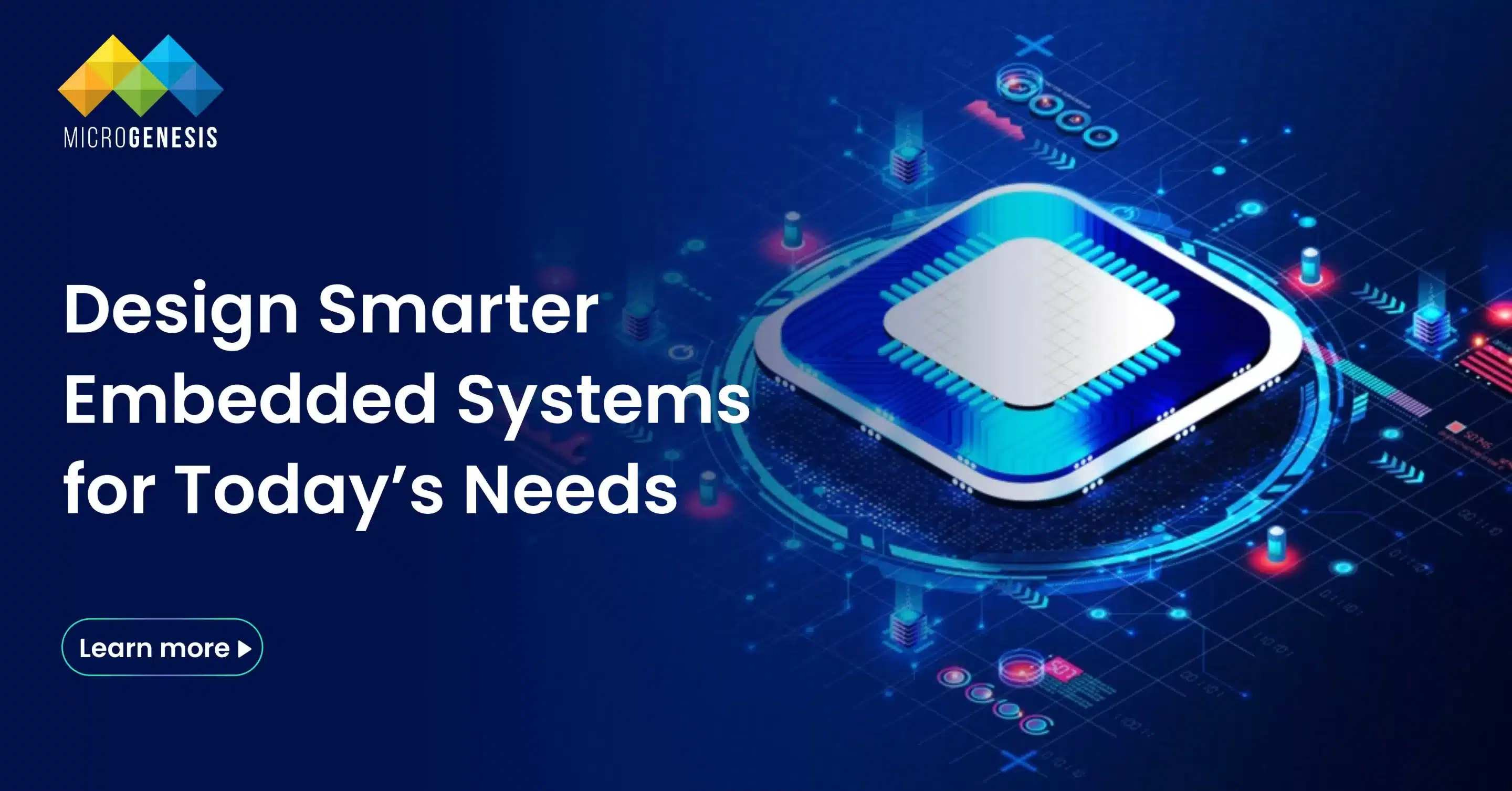The digital transformation era has ushered in a world where intelligent, connected devices are everywhere — from automobiles and industrial machinery to wearable devices and medical instruments. At the heart of this revolution lies the embedded system — a fusion of hardware and software designed to perform dedicated tasks efficiently, reliably, and often autonomously.
Unlike general-purpose computers, embedded systems are purpose-built. They control the braking mechanism of a car, monitor patient vitals, regulate factory automation lines, and manage energy usage in smart grids. The growing complexity of these devices has made embedded system design both an engineering art and a scientific discipline.
This article explores how engineers approach embedded design for modern applications — detailing processes, architectures, tools, and trends that shape the next generation of intelligent systems.
2. Understanding Embedded Systems
2.1 Definition
An embedded system is a specialized computing system that performs a specific function within a larger mechanical or electrical system. It combines hardware components (microcontrollers, sensors, communication interfaces) with embedded software (firmware or real-time operating systems) to deliver targeted functionality.
In essence, embedded systems bring intelligence to otherwise “dumb” hardware — enabling decision-making, automation, and connectivity.
2.2 Core Characteristics
- Dedicated Functionality: Each embedded system is optimized for a singular purpose, such as signal processing or motor control.
- Resource Constraints: They operate under tight limits on power, memory, and processing capacity.
- Real-Time Operation: Many embedded systems must respond instantly to inputs (e.g., airbag deployment).
- Reliability and Stability: Designed for continuous operation with minimal failure tolerance.
- Integration: Embedded systems often interface with sensors, actuators, and communication modules to interact with their environments.
2.3 Examples of Modern Embedded Applications
- Automotive systems: Engine control units, advanced driver-assistance systems (ADAS).
- Consumer electronics: Smart TVs, wearables, gaming consoles.
- Industrial automation: PLCs, robotic controllers, and predictive maintenance sensors.
- Healthcare: Portable diagnostic equipment, infusion pumps, and remote monitoring devices.
- Aerospace and defense: Avionics, navigation systems, and unmanned aerial vehicles (UAVs).
These examples illustrate the diversity and ubiquity of embedded technology in the modern world.
3. The Embedded System Design Lifecycle
Designing an embedded system involves a structured engineering process that integrates hardware and software development. While specific methodologies vary by industry, the general embedded design process follows several essential stages.
3.1 Requirement Analysis
Every successful embedded project begins with clear, quantifiable requirements. Engineers collaborate with stakeholders to identify:
- Functional requirements (what the system must do).
- Performance targets (latency, throughput, and energy efficiency).
- Environmental constraints (temperature, vibration, or radiation tolerance).
- Regulatory or safety standards (e.g., ISO 26262, DO-178C, or IEC 62304).
Defining requirements early prevents costly redesigns later in development and ensures alignment between hardware and software goals.
3.2 System Architecture and Design
Once requirements are established, architects design the system’s hardware–software architecture.
Key tasks include:
- Selecting the microcontroller (MCU) or microprocessor (MPU) based on performance, power, and cost.
- Designing hardware interfaces for sensors, actuators, and communication modules.
- Defining memory hierarchy (RAM, Flash, EEPROM).
- Choosing an appropriate real-time operating system (RTOS) or bare-metal implementation.
- Establishing communication protocols (I²C, SPI, UART, CAN, or Ethernet).
A well-structured architecture ensures scalability, maintainability, and long-term product sustainability.
3.3 Hardware Design and Prototyping
In this phase, electrical and electronic engineers design the printed circuit board (PCB) and integrate the chosen components. Simulation tools validate electrical characteristics such as signal integrity, EMI/EMC compliance, and power consumption.
Once the prototype is built, hardware validation ensures that all components operate as expected. Engineers often create multiple iterations to fine-tune performance and reliability before mass production.
3.4 Firmware and Software Development
Firmware development brings hardware to life. Developers write low-level code to control peripherals, manage timing, and implement system logic.
Programming languages like C, C++, and increasingly Rust are preferred for their performance and memory control capabilities.
Common Development Activities:
- Writing device drivers for sensors, communication modules, and displays.
- Implementing task scheduling and interrupt handling under an RTOS.
- Integrating algorithms for control, data processing, or communication.
- Conducting unit tests and static code analysis for safety and reliability.
Modern embedded design emphasizes code reusability and modularization, ensuring maintainability and reducing time to market.
3.5 Integration, Testing, and Validation
After individual modules are developed, they are integrated and tested as a complete system.
Testing is critical in embedded system design because even minor bugs can lead to hardware failures or safety hazards.
Testing Techniques:
- Unit Testing: Verifies the correctness of individual software components.
- Integration Testing: Ensures modules work together seamlessly.
- Hardware-in-the-Loop (HIL) Testing: Simulates real-world signals and conditions.
- Performance and Stress Testing: Evaluates timing, throughput, and reliability under load.
- Compliance Testing: Confirms adherence to safety or communication standards.
Robust testing ensures that embedded systems meet both functional and regulatory requirements.
3.6 Deployment and Lifecycle Management
Once validated, the embedded system is deployed to production. However, deployment marks the beginning of the maintenance phase, not the end.
As devices grow more connected, manufacturers often deliver Over-the-Air (OTA) updates to patch security vulnerabilities or add new features remotely. Lifecycle management also involves monitoring hardware obsolescence and ensuring backward compatibility for future revisions.
4. Key Tools in Embedded System Design
Modern embedded design relies on a suite of specialized tools that streamline development, testing, and deployment. These tools bridge the gap between conceptual design and real-world performance.
4.1 Integrated Development Environments (IDEs)
IDEs provide a unified environment for writing, compiling, and debugging code. Common choices include:
- Keil µVision – widely used for ARM-based MCUs.
- IAR Embedded Workbench – optimized for safety-critical applications.
- Eclipse IDEs (e.g., STM32CubeIDE, MPLAB X) – open-source and customizable.
- SEGGER Embedded Studio – efficient for resource-constrained projects.
These tools often include peripheral configuration wizards, hardware simulation, and debugging integration.
Learn More: Configuration Management in System and Software Engineering
4.2 Simulation and Modeling Tools
Before hardware is built, engineers use simulation to predict system behavior.
MATLAB/Simulink, Proteus, and PSIM allow for model-based design, enabling algorithm testing and optimization before coding begins.
Model-based design reduces time-to-market and ensures consistency between design intent and implementation.
4.3 Debugging and Profiling Tools
Debugging embedded systems is uniquely challenging due to hardware constraints and timing dependencies.
Tools such as:
- JTAG/SWD Debuggers
- Logic Analyzers
- Oscilloscopes
- Serial Monitors (e.g., UART analyzers)
help engineers inspect real-time data, step through code, and identify performance bottlenecks or hardware faults.
4.4 Version Control and Collaboration Tools
For large projects involving distributed teams, version control is indispensable.
Git, GitLab, and Bitbucket enable collaborative development, while Jenkins and Azure DevOps support CI/CD pipelines for firmware builds and regression testing.
4.5 Verification and Validation Tools
Tools like VectorCAST, Polyspace, and Coverity ensure code reliability through static and dynamic analysis.
For regulated industries, compliance with MISRA-C, AUTOSAR, or IEC 61508 is verified through automated code checks.
5. Design Considerations for Modern Embedded Systems
The growing complexity of today’s embedded applications demands that engineers balance functionality, performance, and security. The following design considerations guide successful embedded system projects.
5.1 Real-Time Performance
Many embedded systems are real-time systems, meaning their outputs must occur within fixed time constraints. Engineers must choose processors and scheduling algorithms capable of deterministic performance under varying loads.
Read more: What is Embedded DevOps? Benefits and Challenges
5.2 Power Efficiency
With the rise of portable and battery-powered devices, low-power design is critical. Techniques such as dynamic voltage scaling, sleep modes, and energy-efficient peripherals are central to modern embedded design.
5.3 Scalability and Modularity
Modular system design allows reusability and scalability across multiple product lines. For instance, a single control board may support different industrial machines with minor software modifications.
5.4 Security by Design
Embedded systems are increasingly networked, making them targets for cyber threats.
Security by design involves incorporating encryption, secure boot, code signing, and access control at every layer of development.
5.5 Safety and Reliability
In applications like automotive, aerospace, and healthcare, failure is not an option. Redundancy, fault tolerance, and rigorous validation are critical to ensuring safe and reliable operation.
6. Embedded Design for Emerging Domains
6.1 Automotive Systems
Modern vehicles depend on dozens of embedded systems — from engine control to infotainment and ADAS. Automotive embedded design emphasizes real-time communication (CAN, LIN, FlexRay) and adherence to safety standards such as ISO 26262.
6.2 Internet of Things (IoT)
IoT devices rely on compact, energy-efficient embedded systems capable of wireless connectivity. Low-power microcontrollers, lightweight RTOS, and secure communication stacks (MQTT, CoAP) are essential.
6.3 Healthcare and Medical Devices
Embedded systems in healthcare demand precision, reliability, and certification compliance (IEC 62304). Real-time monitoring and wireless connectivity enable remote diagnostics and telemedicine.
6.4 Industrial Automation
Embedded controllers drive industrial robotics, sensors, and process control systems. Modern designs focus on edge intelligence, predictive maintenance, and interoperability with cloud analytics platforms.
Read More:
6.5 Consumer Electronics
From smart speakers to gaming consoles, consumer electronics push the limits of performance and design integration, requiring compact form factors and intuitive user interfaces powered by sophisticated embedded systems.
7. Trends Shaping the Future of Embedded System Design
The future of embedded design is dynamic, with rapid technological advances redefining how engineers build and optimize systems.
7.1 Artificial Intelligence and Edge Computing
AI-enabled embedded systems are capable of processing data locally, enabling faster decision-making for applications such as object detection, predictive maintenance, and autonomous vehicles.
7.2 Open-Source Hardware and Software
Open frameworks like RISC-V and Zephyr RTOS are democratizing innovation, offering flexibility and community-driven support.
7.3 Cloud Connectivity and Digital Twins
Cloud integration allows real-time monitoring, analytics, and remote updates, while digital twin technologies simulate device behavior to optimize performance before deployment.
7.4 Sustainability and Green Engineering
Eco-friendly embedded design prioritizes recyclable materials, energy-efficient components, and long product lifecycles to minimize environmental impact.
7.5 Cybersecurity as a Core Discipline
Future systems will embed hardware-based trust anchors and secure elements to protect data integrity from design to decommissioning.
8. Conclusion
Embedded system design is the foundation of modern intelligent technology. As industries evolve toward smarter, connected, and autonomous systems, the importance of precise, secure, and efficient embedded design has never been greater.
From the earliest stages of architecture to long-term lifecycle management, every design choice influences reliability, scalability, and sustainability. Partnering with Top Custom Software Development Companies like MicroGenesis empowers organizations to adopt best practices, leverage modern tools, and foster multidisciplinary collaboration—driving innovation and building future-ready embedded solutions.
In essence, the embedded system is not just a component — it is the core enabler of the digital future, powering everything from self-driving cars to life-saving medical devices.
By mastering the principles of embedded system design and integrating embedded DevOps services, engineers and enterprises can streamline development, enhance collaboration, and transform today’s technological challenges into tomorrow’s intelligent, connected solutions.




